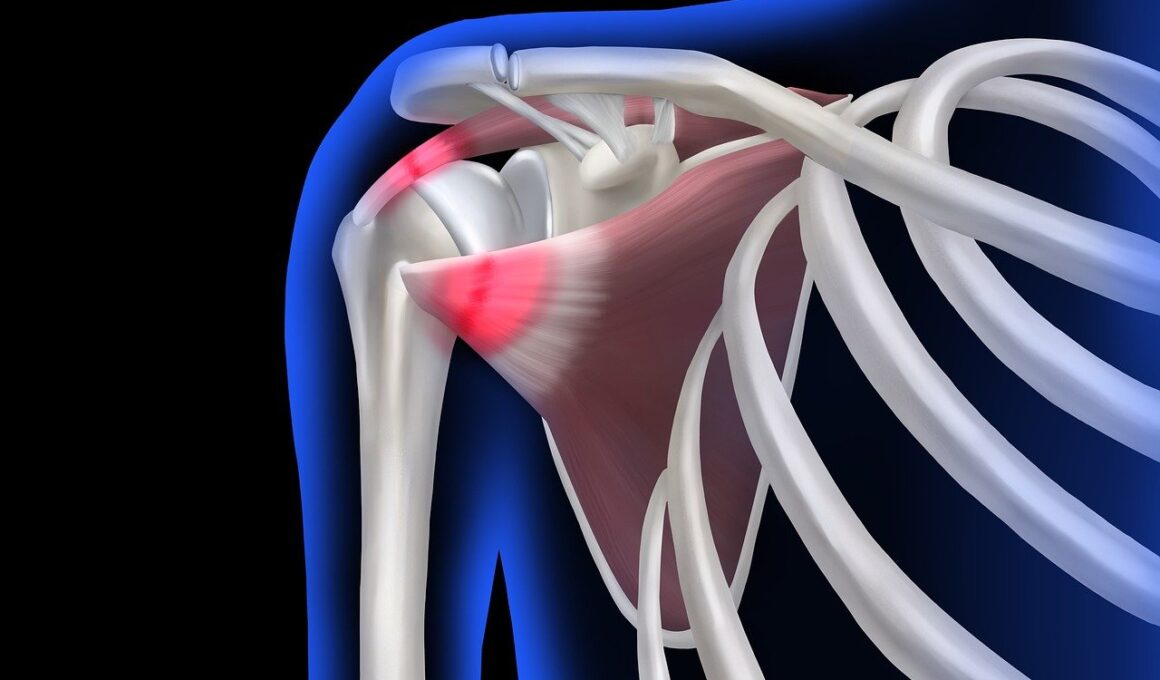Effectiveness of Cryotherapy in Shoulder Injury Management
In the realm of sports medicine, managing shoulder injuries effectively is crucial for athletes’ performance and long-term health. Cryotherapy, a method involving the application of cold therapy to the affected area, has gained popularity among sports professionals. Numerous studies suggest that cryotherapy facilitates faster recovery by reducing inflammation and pain. The efficacy of cryotherapy is based on its ability to constrict blood vessels, which decreases circulation to the injured area, thus helping to mitigate swelling. Athletes often face severe shoulder injuries that can hinder their training and competition schedules. Injuries such as rotator cuff tears and shoulder dislocations can occur due to repetitive motion, trauma, or overuse. Implementing cryotherapy in treatment protocols may provide an alternative to invasive procedures. Furthermore, when integrated with other forms of rehabilitation, such as physiotherapy, it may enhance overall recovery outcomes. Coaches and trainers should be well-informed about the benefits and application methods of cryotherapy to ensure proper administration. Having a comprehensive understanding of its effects can truly make a substantial difference in athlete recovery pathways.
One of the primary benefits of cryotherapy in treating shoulder injuries is its ability to alleviate pain and inflammation efficiently. In many cases, athletes experience significant pain immediately following an injury, which can demotivate them and delay recovery. By applying cryotherapy techniques, such as ice packs or cryo chambers, athletes can manage their pain levels more effectively. Studies have shown that cold therapy can lead to a decrease in pain perception, allowing athletes to perform light activities sooner. Cold therapy works by numbing the painful area, which helps in managing acute pain. Cryotherapy also limits the inflammatory response, which is often triggered by injuries. An optimal recovery plan incorporates a combination of cryotherapy and other therapeutic modalities. This multifaceted approach ensures a more well-rounded recovery process. For example, after cryotherapy, low-intensity exercises may promote blood flow, thus supporting healing. Athletes are encouraged to follow a structured rehabilitation protocol after initial injury management. This approach gives them an improved chance of preventing future injuries while ensuring a faster return to their sport.
Collaboration with Healthcare Professionals
In the management of shoulder injuries, collaboration between athletes and healthcare professionals is essential. Medical experts play a crucial role in crafting individualized treatment plans that incorporate cryotherapy effectively. Depending on the nature and severity of the injury, healthcare providers can recommend specific cryotherapy protocols to maximize benefits. Additionally, trainers and physiotherapists often work together in monitoring an athlete’s response to cryotherapy. This ongoing evaluation is vital to adjust rehabilitation strategies and ensure optimal recovery. It is crucial for the athlete to communicate any discomfort or concerns during cryotherapy sessions. By providing feedback, athletes assist healthcare professionals in making informed decisions about their treatment. Furthermore, regular assessments can determine whether changes in treatment are needed. It is also important for healthcare professionals to educate athletes regarding the possible side effects of cryotherapy. Understanding these aspects can lead to increased compliance and satisfaction with the treatment process. The goal should not only be immediate relief from shoulder pain but also long-term functionality and performance enhancement. Having a cohesive and supportive approach to treatment fosters better outcomes.
A key concern when utilizing cryotherapy is the timing of its application and duration. Athletes may benefit most from cryotherapy applied soon after an injury occurs. Early intervention can significantly enhance recovery metrics and may reduce the risk of chronic issues developing later. However, improper application techniques can lead to adverse effects, such as frostbite or nerve damage. Training staff and athletes on best practices for safely administering cryotherapy is vital. Sessions should be paced according to individual comfort levels and injury severity. Each application should also consider the recommended time frames to avoid complications. Moreover, understanding appropriate temperatures for cold therapies ensures safety while achieving desired therapeutic effects. Athletes may also use cryotherapy in conjunction with other treatments, enhancing its effectiveness. Integrating this method into a holistic care strategy can lead to functional improvements. Highlighting success stories of athletes who have used cryotherapy can serve as inspiration and motivation. Success stories illustrate the importance of innovation in treatment modalities within sports medicine. As research progresses, new findings may refine our understanding of cryotherapy’s role in shoulder injury management.
Alternatives to Cryotherapy
Although cryotherapy has proven beneficial in managing shoulder injuries, alternative therapies also show promise for athletes. Methods such as heat therapy, compression, and electrical stimulation have their unique advantages. Heat therapy is known to enhance blood circulation, which aids in muscle relaxation and pain relief. This method can be particularly effective during the later stages of rehabilitation. Compression, on the other hand, helps limit swelling by providing steady pressure to the injured area. This method can prevent fluid accumulation and promote healing. Electrical stimulation therapy is gaining traction for its role in muscle activation and pain alleviation. Each treatment method possesses distinct benefits and can be tailored to an athlete’s specific needs and preferences. It is essential for athletes to communicate their overall recovery goals and preferences with their healthcare provider. Discussing these options can lead to the development of a personalized recovery plan that includes various therapeutic approaches. Ultimately, choosing effective modalities contributes to improved outcomes in shoulder injury management. As research continues, more therapies may emerge, leading to an even wider array of recovery options available for athletes.
The importance of education surrounding cryotherapy cannot be overstated in sports medicine. Athletes must remain informed about the advantages and limitations of this treatment tool. Understanding how to utilize cryotherapy within a broader recovery framework is vital for effective management. Training programs should emphasize educating athletes about recognizing injuries and deciding when cryotherapy may be beneficial. Proper education allows athletes to take proactive roles in their recovery processes. Furthermore, combining education with access to evidence-based literature encourages informed decision-making. It bolsters the communication between athletes and their healthcare professionals. This collaboration can increase the likelihood of successful outcomes and promote adherence to treatment plans. Ultimately, by facilitating enhanced education opportunities, healthcare professionals empower athletes to make better choices regarding their health. Well-informed athletes are generally more engaged in their recovery, leading to quicker turnaround times. This outcome emphasizes the critical nature of an educated approach to shoulder injury management. As awareness of the benefits of cryotherapy grows, its implementation in sports injury treatment protocols can only expand, enhancing overall health and performance for athletes.
Conclusion
In summary, cryotherapy presents significant potential in managing shoulder injuries among athletes. Its ability to reduce pain and inflammation makes it a desirable treatment option. Additionally, understanding and educating about cryotherapy can enhance rehabilitation outcomes, ensuring athletes receive optimal care. Collaborative efforts between athletes, trainers, and healthcare professionals play a crucial role in maximizing the benefits of cryotherapy. By cultivating a supportive environment, athletes can achieve their rehabilitation goals more efficiently. Moreover, integrating alternative therapies alongside cryotherapy allows for a tailored approach to individual needs. This flexible mindset highlights the importance of personalized treatment strategies in establishing a comprehensive recovery plan. It is essential for athletes to remain proactive and informed throughout their recovery journey, as deeper understanding fosters better health outcomes. As research continues to evolve, new insights will surface regarding the effectiveness of cryotherapy. Through commitment to innovation and education, the sports medicine field can improve the overall outlook for shoulder injury management. Ultimately, the effectiveness of cryotherapy is enhanced by a thorough understanding of its application methods and benefits. As athletes embrace cryotherapy, they pave the way for longer, healthier athletic careers.
This closing paragraph wraps up how cryotherapy significantly impacts shoulder injury management effectively. Cryotherapy has emerged as a dynamic therapeutic option, making substantial contributions across various sports injuries.





